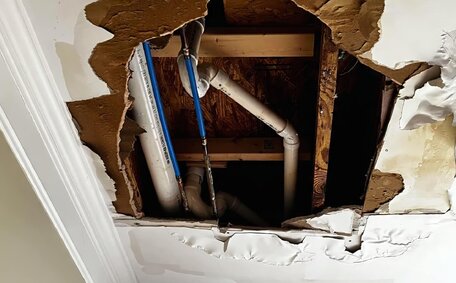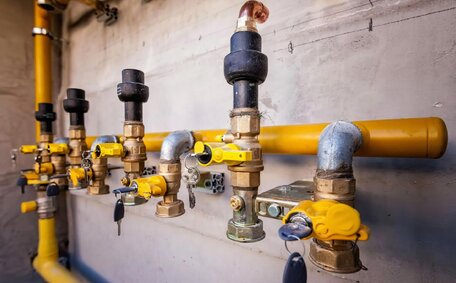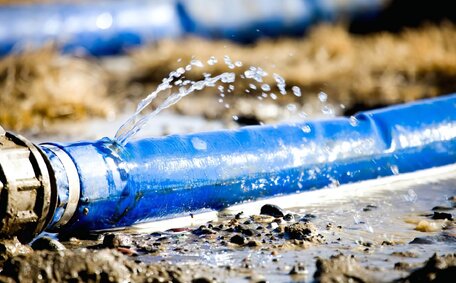Identifying Drain Blockages: Signs and Causes
Blocked drains in your kitchen are a frequent headache in Lindfield homes and businesses, often indicated by slow draining water, gurgling sounds from pipes, unpleasant odours, and water backup.
To unblock toilet drains, remove the build-up of hair, food scraps, and bathroom products that block water flow. Tree roots can also invade pipes, particularly in suburban areas, causing recurring drain blockages.
As materials gradually amass, they restrict water flow through pipes. Small drain clogs may not initially hinder water flow but can eventually clog up and turn into solid blockages deep into pipes. Promptly addressing slow drains can prevent severe blockages, reducing the need for professional assistance.
Drain Types and Selecting the Right Plunger
There are several common types of drains found within your kitchen bathroom setups, including those designed for toilet unblocking in Lindfield:
- Bathroom sink drains
- Kitchen sink drains
- Bathtub drain and shower drain systems
- Toilet drains
Each drain, particularly your shower, requires a specially designed plunger to achieve the necessary airtight seal for effective plunging:
- Sink plungers, distinct from toilet plungers, are crafted to create potent suction on your sink with their flat bottom and conical shape.
- Toilet plungers, designed differently than sink plungers, come with an additional flap to aid in creating a firm seal against a blocked toilet drain and overflow pipe.
Positioning the plunger over drain incorrectly or failing to effectively operate a drain auger can result in an inadequate seal and fail in your quest to unblock sink efficiently. It may even damage your sink or toilet fixtures if the plunger is improperly sized.
Always choose a plunger designed so that you get right to the source of the issue, whether for sinks or toilets. Check that it forms a tight seal when positioned with proper technique to use drain equipment to efficiently displace blockages.
Using a Plunger Safely and Effectively
For successful drain unblocking, start by pouring approximately 500ml of hot water down the drain to soften and start dissolving the clog, easing grease buildup to enhance suction.
Select the right plunger for the drain to ensure an airtight seal, a crucial factor in effective plunging. For sinks, remember to block the secondary drain typically found under sink fixtures to maximise suction.
Begin with a gentle push to seal the plunger over the drain, then plunge vigorously 10-15 times to drive water into the blockage with consistent force.
Apply consistent bursts of force while plunging to effectively dislodge obstruction in the blocked drain. Continue using the hand crank technique to clear the blocked drain, waiting 2-3 minutes before checking if water has started draining. You may need to repeat several rounds of forceful plunging.
Maintain a tight seal and avoid exerting excessive pressure on delicate fixtures like drain covers. Always wear gloves for sanitation and safety.
After clearing the blockage, flush the drain with hot water to remove any remaining debris. To prevent mildew, clean and dry the plunger thoroughly before storing.
Improving Plunger Suction for the Most Stubborn Clogs
Enhanced techniques are needed to improve suction and clear clogs deep within your plumbing system.
To create a robust seal through overflow areas, strategically apply duct tape around the overflow hole to boost your capacity to unblock drains, blocking air leaks that reduce suction. Vigorously plunge for 2-4 minutes to dislodge deep blockages, ensuring there are no air leaks from the overflow.
Alternate plunging with pouring approximately 500ml of boiling water down the drain to assist in clearing the pipes. The heat will aid in loosening thickened debris or grease clogs. Combine 6 tablespoons of bicarb soda with a cup white vinegar, gently warmed, to amplify the dissolving reaction. Let the fizzing mixture foam and react for 5-10 minutes before plunging again to break up the clog.
Ensure an airtight seal to prevent spillages when using chemical drain cleaners and check for any air leaks that might reduce suction.
When a Plunger Won’t Cut It: Alternative Drain Unclogging Methods
If your plunger efforts fall short, you’ve got the option to switch to more sophisticated methods to unclog the drain adequately. Deep blockages beyond a plunger’s limited reach or pipes damaged by invading tree roots often need alternative solutions.
If a mix of baking soda and heated white vinegar fails, use a closet auger to handle stubborn organic clogs. Allow the fizzing reaction to work in your drain for 5-10 minutes before flushing with hot water to aid in dissolving the obstruction.
You can also use commercial enzymatic drain cleaner solutions to help cleanse your plumbing system, unclogging your pipes by dissolving hair and food waste. Pour the enzymatic drain cleaner into the drain, allow enough time for it to work, then flush with hot water.
Consult our guide how to retrieve obstructions from further down, utilising a power auger or even a straightened coat hanger to mechanically hook and dislodge clogs that are situated deeper. Carefully feed the drain snake a few metres down the drain, twisting clockwise as you push deeper, and then retract. Avoid scratching pipes or catching and damaging connections though.
If plungers and chemicals are ineffective, a drain auger can clear deeper blockages, as it can navigate and dislodge stubborn clogs within your pipes.
Natural Drain Cleaners: Vinegar, Baking Soda, and Enzymes
Natural drain cleaning methods, like vinegar and baking soda mixtures, prevent clogs and maintain clear pipes without harsh chemicals. A simple yet effective approach is combining common household ingredients like distilled white vinegar and baking soda.
For a DIY solution, mix 1 cup of baking soda with 1 cup of heated white vinegar to effectively tackle clogs. If preferred, use washing powder as an alternative unclogging agent to prevent spills.
Alternatively, pour baking soda followed by heated vinegar down the drain to create a foaming reaction. First pour baking soda down the drain, followed by heated vinegar to activate foaming. In either case, let the reactive solution sit for 5-10 minutes to work on breaking up the clog down plughole.
Following the reaction, rinse the drain with 4 litres of hot water to clear residual debris. The reaction of acid and base produces CO2 bubbles that help dissolve organic blockages.
Alternatively, consider enzymatic drain cleaners with natural enzymes and bacteria that break down common blockages. Apply the solution, wait as instructed, and flush for optimal results.
These non-toxic methods can help maintain clear drains, thus avoiding future clogs, backups, or potential damage from chemical cleaners.
Calling in the Professionals: Reasons to Hire a Plumber
Even with correct DIY techniques, some severe clogs may persist. Persistent blockages often call for a professional plumber’s equipment and expertise beyond basic home attempts – recognising when to seek help can prevent pipe damage and costly water leaks.
As experienced Lindfield plumbers, we use high-powered hydrojetters with pressurised water jetting to eliminate almost any stubborn drain blockage. Our team adeptly uses drain snakes with cameras to inspect deeper pipes and locates issues such as tree root invasions or fractures requiring repair.
Call 1300 349 338 to have our skilled technicians, recognised for their vast expertise, handle your drain clearing needs without the frustrations and risks associated with DIY attempts. We provide professional evaluations and recommend solutions customised to your specific situation. With ample years experience under our belts, spanning over a decade serving Sydney households and businesses, clients rely on us to tackle even the most challenging plumbing predicaments.
Avoid the risk of burst pipes from faulty DIY attempts – our prompt service guarantees to get your drains flowing smoothly once more. Protecting your home or business from water damage starts by submitting your request for Lindfield Plumbing’s affordable drain unblocking services.






